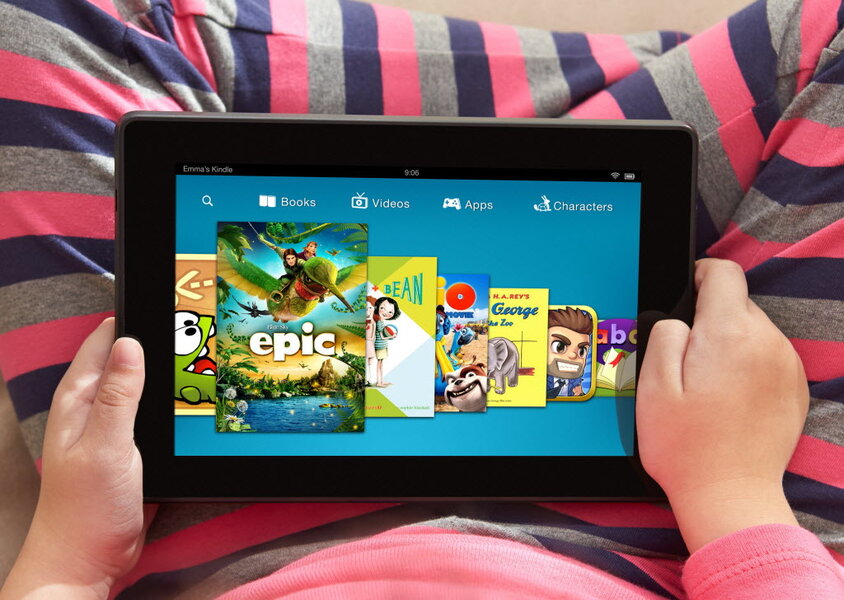Amazon turns stories into chat strings. Will it help kids read?
Loading...
On Wednesday, Amazon released an app for children. Called "Rapids," it presents hundreds of children’s stories from various genres in the form of illustrated text message dialogue between characters.
In developing the app, Amazon wanted to get children ages 7 to 12 engaged in the reading process in a way that feels natural to the digital natives. However, while reading in any form is good for kids, some education experts wonder how beneficial and applicable this new genre of children's stories will prove in practice.
“We know that many kids already enjoy chatting with friends and family on their devices,” Michael Robinson, director of consumer products for Amazon Education, said in a statement. “Embracing this, we wanted to see what authors and illustrators could create with an app that made it easy to tell stories that way.”
While kids make their way through adventure, fantasy, humor, or mystery stories, chat bubbles ask them to think about certain concepts or give funny insights to make them laugh. Mr. Robinson emphasized the importance of making reading humorous and entertaining for young readers to keep them interested.
But the app is educational as well. A customizable glossary helps young readers learn new words and how to pronounce them. There is also a “read to me feature" where the app reads. Although it sounds very robotic, Robinson says, his own children do not seem to mind.
“He’s reading, and he’s learning at the same time. All the research says it’s great to read to your kids anyway, and so it’s reading to him,” Robinson told TechWire about his son's experience with the app reading aloud.
But not everyone is as sold on Rapids as Robinson’s son.
“In and of itself, it is always good for kids to be reading,” Kimberly Lawless, associate dean of research at the University of Illinois, Chicago, tells The Christian Science Monitor. “The more you can engage them in activities that require them to decode words and understand and comprehend story lines and do that over a lengthy duration, the better the kids are going to be able to develop those skills because they are practicing them."
But that's not the whole story, she says.
The app "may not yield much benefit in terms of improving their overall literacy skills," Dean Lawless continues, "because it is not necessarily engaging with texts that they would engage with on an everyday basis.”
Lawless says that unless the app is truly teaching kids the basic elements of story narrative and genre, teaching them to recognize character archetypes, or developing background information, the text conversation structure would likely not have much benefit to overall literacy.
“It seems like what they are attempting to do is to capitalize on the motivational aspect of technology texting in order to create an environment that will draw students in to actually engage in literacy practices,” Lawless tells the Monitor. “But those literary practices are ones they are already engaging in because they already text using a cell phone.”
Robinson says the finished product is just what he envisioned.
“It’s worked exactly in the way that I want it to,” Robinson told GeekWire. “If there’s no book in the car and they really want to read, my daughter can just grab my phone, read a Rapids story, and she’s read one or two by the time we reach the destination.”
Rapids is available for $2.99 per month with a two week free trial on all iOS, Android, and Amazon Fire devices. Amazon says dozens of new stories will be added monthly.








